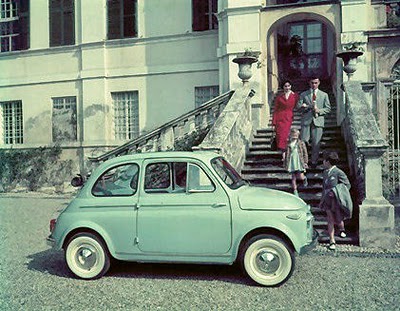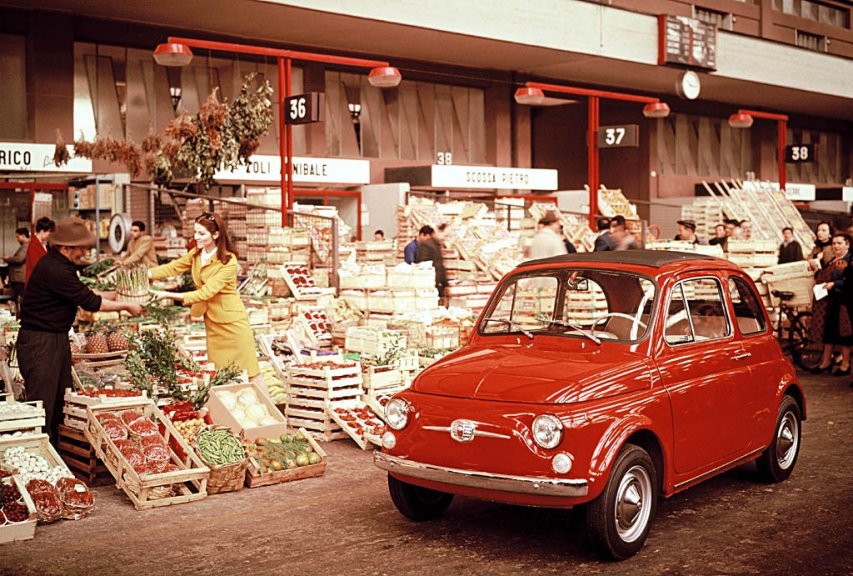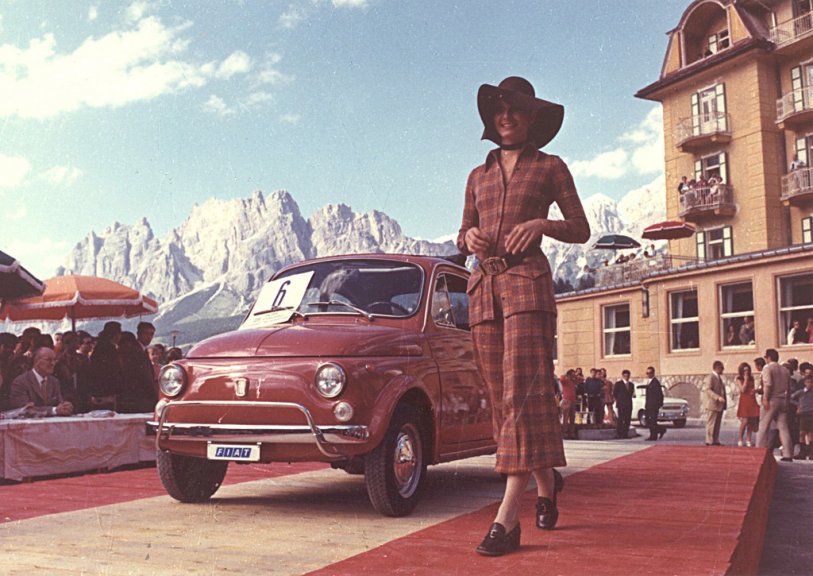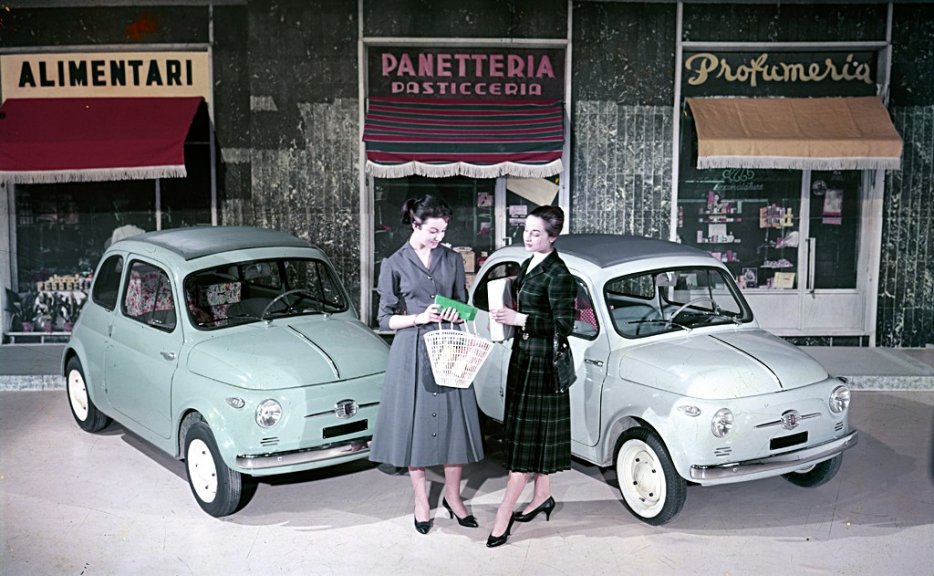The Cinquecento…The Italian Icon
Fiat was born in 1899 and over its history has had many classic and
revolutionary cars, but there has been one car that Fiat has made that
tops all of them, and introduced on July 4th, 1957, the Cinquecento!
In today’s world the idea of a small, efficient car is a common idea for sure,
but when Fiat decided to create their own version of this idea, something
magical happened in the process. The new category of the “city car”, came
to be. The Fiat 500 was the first small car that maximized interior space.
Its dimensions are 9 feet 9 inches long, 4.3 feet wide and 4.3 feet tall! Its
wheelbase is 6 feet and it only weighed 1,100 pounds, which is unprecedented
for a car these days in the USA! The newest Toyota Prius now weighs in
at 3,042 lbs! This may not mean much at first, but the lighter a car, means the
more fuel efficient it is.
In 1957, when Fiat created the Cinquecento, it was a cultural phenomenon.
People loved it, and not only that, it was an absolutely gorgeous car, was fuel
efficient, fun, and spacious.
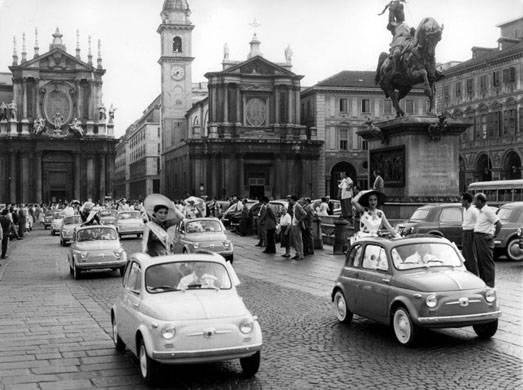
Fiat 500 Models
Nuova – (1957-1960) The original 500, the Nuova has a smaller engine than all newer models, at 479cc and producing 13 bhp. The original model also features a roof folding all the way back to the rear of the vehicle, rather than the later roof design which only folds half way back along the roof. The Nuova is one of three models featuring “suicide doors”.
D – (1960-1969) Replacing the original Nuova in 1960, the D looks very similar, but there are two key differences. One is the engine size (the D features a larger 499cc engine producing 17 bhp as standard – this engine is used right through until the end of the L in 1973) and the other is the roof (the D roof does not fold back as far as the roof on the Nuova). The D also features “suicide doors”.
F or Berlina – (1965-1972) The F spans two periods of 500 production, the D and the L. As such, it is the most frequently misidentified model. Between 1965 and 1969 the F carried the same badging as the D and the two models are only distinguishable by their doors – the D has “suicide doors”. Between 1969 and 1972 the F was sold alongside the Lusso model as a cheaper “base model” alternative. While the F and L are mechanically very similar, the key differences are the bumpers (the L has an extra chrome nudge bar) and the interior (the F interior is nearly identical to the original 1957 design while the L sports a much more modern look).
L or Lusso – (1968-1972) The penultimate model, the main change for the L is a much modernized interior (including a renewed dashboard) which brought the Fiat 500 up to date. Greater comfort and style were provided in this new model for the new generation.
R or Rinnovata – (1972-1975) The last incarnation of the Fiat 500. It had a larger 594cc engine, giving it a power rating of 23 bhp, and came with a non-synchromesh “crash-box” transmission. This transmission was retained from the earlier ‘F’ model, it was also more comfortable and more simply trimmed and equipped than ever – no gas gauge, just a low fuel warning lamp.
Fiat 500 Trivia
The Fiat 500 is not just an iconic Italian Classic Car but also part of Italy’s heritage and also a great topic of conversation for classic car enthusiasts!
- This car appears in the video game, Grand Turisimo 2 and 4
- Ferrari Formula One Champion Michael Schumacher owns a Fiat 500
- AOL presented the “top coolest cars” in June 2007 and the bubble car was in pole position
- Fiat 500s have one similar component to a Classic Ferrari….the 8 amp fuses!
- The Fiat five hundred was named such as it has a 500 cc engine and weighs 500 kilos
- It is crowned sexiest car in the world by Top Gear magazine in June 2006
- A character on the Disney/Pixar film Cars is a 1959 Fiat 500 named ‘Luigi’ who is the mechanic.
